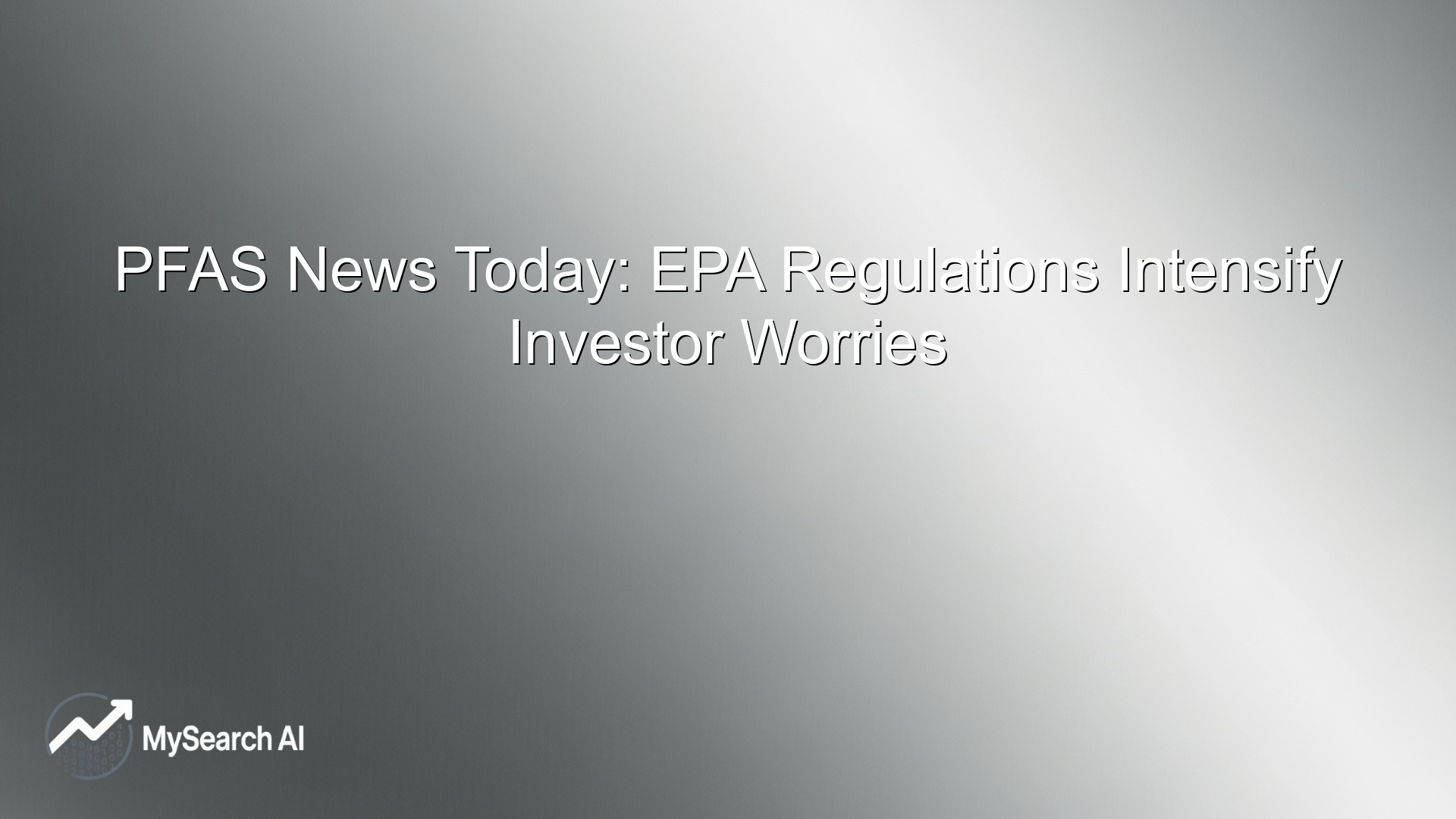Related Articles
Ask anything about stocks
PFAS News Today: EPA Regulations Intensify Investor Worries
In recent months, the Environmental Protection Agency (EPA) has ramped up its regulations on PFAS, or “forever chemicals,” turning up the heat on chemical manufacturing companies. These regulations aim to curb PFAS contamination and safeguard public health by imposing stricter limits. For companies in this sector, heightened compliance costs and potential legal challenges loom large. This development has sparked concern among investors, as the financial implications could significantly affect profitability. Understanding these changes is crucial for anyone investing in the chemical industry today.
Understanding PFAS and EPA’s Tightening Regulations
PFAS, or per- and polyfluoroalkyl substances, are man-made chemicals found in various consumer products. Nicknamed “forever chemicals” due to their persistence in the environment, they have been linked to health issues such as cancer and immune system harm.
The EPA has been intensifying its regulations to mitigate PFAS contamination. Recent policies include setting enforceable limits on PFAS in drinking water and requiring detailed reporting from chemical manufacturers. These measures are designed to reduce health risks but pose significant challenges for industry players. Enhanced scrutiny means companies must ramp up compliance efforts, a shift that could drive up operational costs significantly.
Investor Impact: Financial Risks in the Chemical Sector
Investors are right to worry about how these regulations could impact chemical companies financially. These firms now face costly upgrades to meet regulatory standards and a potential increase in legal liabilities associated with PFAS contamination.
For investors, this means heightened risk. Companies failing to comply can face substantial fines and reputational damage. Additionally, such firms may see reduced profit margins due to elevated compliance expenses. This situation urges investors to reassess their portfolios, focusing on how well these companies are managing the transition. Staying informed about each company’s response is crucial for making sound investment decisions.
Navigating the Regulatory Landscape
Handling the evolving landscape requires companies to innovate and adapt swiftly. Those investing in sustainable technologies might fare better, as they align more closely with the EPA’s goals. For example, opting for PFAS alternatives can offer a competitive edge if regulations tighten further.
Investors should pay close attention to how chemical companies are addressing these regulatory challenges. Are they investing in green technology? Are they transparent about their compliance strategies? Such factors will be critical when evaluating potential long-term investments in the sector.
Public Concerns and Market Sentiment
The broader public is increasingly aware of PFAS risks, further pressuring companies. Awareness campaigns and environmental reports, like those highlighting high PFAS levels in areas like Tampa, amplify this issue (source).
Social media and news platforms are abuzz with discussions on the impact of these chemicals, adding an extra layer of scrutiny. For instance, recent posts on platforms like Reddit highlight public demand for corporate responsibility and transparency in handling PFAS concerns. Investors need to monitor these public sentiments as they can influence market and consumer behavior.
Final Thoughts
PFAS EPA regulations represent a pivotal moment for the chemical industry and investors alike. As the EPA tightens its grip, companies face rising costs and increased legal risks. This environment requires investors to critically assess the financial health and regulatory strategies of chemical firms.
For better investment decisions, focus on companies proactively adapting to these changes and investing in sustainable practices. Staying informed and agile ensures alignment with both environmental goals and financial interests. Access real-time insights through platforms like Meyka for a smarter investment approach.
FAQs
What are PFAS, and why are they regulated by the EPA?
PFAS, or per- and polyfluoroalkyl substances, are synthetic chemicals used in various products for their resistant properties. They persist in the environment and can cause health issues, prompting the EPA to regulate them to prevent contamination.
How do PFAS regulations affect chemical companies?
Companies face increased compliance costs and legal risks as they adapt to stricter EPA regulations. This can impact profitability and necessitate significant operational changes.
Why should investors be concerned about PFAS regulations?
Investors must consider potential financial impacts, like lower profit margins and increased liabilities. Reviewing a company's compliance strategies is crucial for informed investment decisions.
Disclaimer:
This is for information only, not financial advice. Always do your research.



